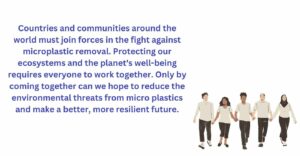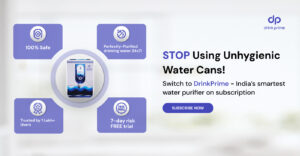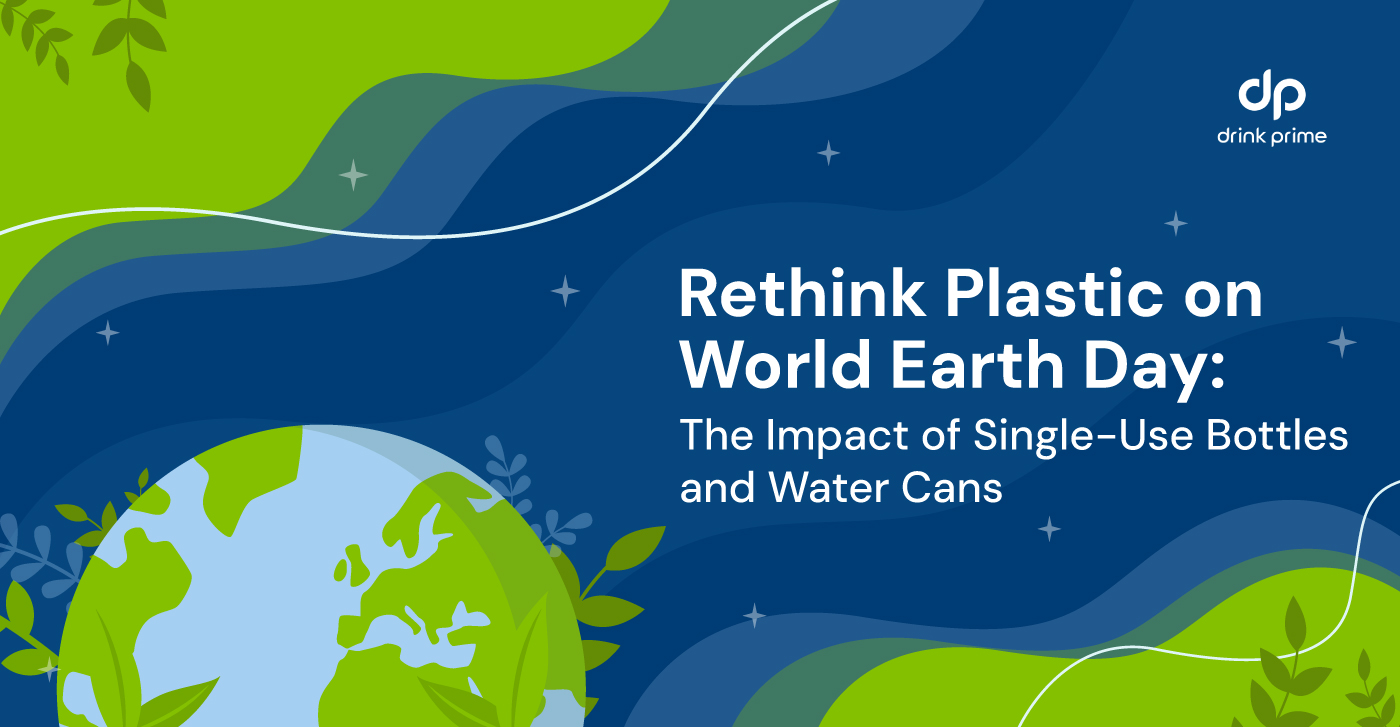Microplastic pollution is a big problem for the environment, affecting ecosystems, aquatic life, and human health. These tiny plastic particles, less than five millimeters in size, are everywhere in water bodies around the world – in rivers, oceans, and even remote places. They come from breaking down large plastic items and intentionally adding them to various products, posing a widespread and harmful threat.
When larger plastics break down due to weathering and time, they release these very small plastic particles into the water. Also, intentionally using microplastics in personal care products, clothes, and packaging spreads them far and wide. This has led to microplastics getting into marine and freshwater ecosystems, even reaching the most isolated places on Earth. Microplastic removal then becomes important.
The effects of microplastic pollution
The effects of microplastic pollution are complicated. It disrupts ecosystems as these particles build up in soil and water, upsetting delicate ecological balances. Aquatic life is heavily impacted, with marine creatures eating microplastics, causing harm and disturbances in the food chain. Additionally, these tiny plastic particles make their way into the food we eat, raising concerns about how they might affect our health in the long run.
Because microplastic pollution is so widespread and serious, there’s a crucial need for fast and effective ways to get rid of it. Dealing with microplastic removal requires a full understanding of where microplastics come from, how they spread, and what impacts they have. It involves using new technologies, strict rules, and global collaboration to create and put into action solutions that will last. The urgency is not just about dealing with the current environmental dangers from microplastics but also about stopping more damage to our ecosystems for the sake of today and tomorrow.
Microplastic removal process

Dealing with the big problem of microplastics needs a thorough and flexible plan. One main way is using physical methods to filter out these tiny particles. Super-precise filters, like membrane and ultrafiltration systems, are good at catching microplastics. These filters use differences in size, density, or charge to separate plastic bits from water very precisely.
Another way to get rid of microplastics is by using chemicals. Advanced oxidation processes (AOPs) are a standout in this group. They use reactive substances like ozone or hydroxyl radicals to break down microplastics into less harmful pieces. While this seems promising, we need to be careful about how it might affect the environment and if it creates harmful byproducts.
For a more eco-friendly approach, biological methods use the power of tiny organisms. Enzymes from bacteria and fungi can break down plastics, giving us a natural and sustainable solution. But there are challenges, like needing just the right conditions for these microorganisms to work and dealing with how fast they break down plastics.
In the quest to solve microplastic removal, technology plays a big role. Nanotechnology, for example, brings in tiny materials with better abilities to remove microplastics from water. These materials really like microplastics, making removal more effective. Also, magnetic and electrostatic methods use special properties of microplastics, like magnetic forces or electrical charges, to help eliminate them.
In short, we need a mix of different ways – physical, chemical, biological, and technological – to deal with microplastics. Each method has its good parts and challenges. This shows us that working together and using different approaches to tackle this complex environmental issue is important. By keeping up with research and development, the combination of these methods has the potential to create complete and lasting solutions for removing microplastics from water. This helps protect ecosystems, aquatic life, and human well-being.
What are the best ways for microplastic removal from water?
To best remove microplastics from water, we use a mix of methods like filters, chemicals, biology, and technology. Here’s how
1. Filters
High-precision filters are super accurate systems using special filters to catch microplastics based on their size, weight, or charge.
2. Chemicals
Using things like ozone or hydroxyl radicals to break down microplastics into less harmful pieces.
3. Biology
Using enzymes from tiny living things like bacteria and fungi to naturally break down plastics in an eco-friendly way.
4. Technology
Using super small materials (nanomaterials) to grab microplastics efficiently or using the special properties of microplastics, like magnets or electricity, to help remove them.
5. Strict Rules
Making and following rules to limit how we use microplastics and making sure people dispose of them properly.
6. Teaching and Talking
Making sure everyone knows about microplastics and how to use plastic responsibly.
Get 7 Days Risk Free Trial
Conclusion

In conclusion, dealing with the challenge of microplastic removal from water needs a smart and creative plan. Methods like using filters, chemicals, and biology show promise, but we have to be careful about how they affect the environment and how well they work. It’s crucial to understand how these methods interact with the ecosystems they’re trying to protect.
Scientists, policymakers, and the public all need to work together to find and use sustainable solutions. Scientists help us understand microplastics better and improve the ways we remove them. Policymakers play a role by making and enforcing rules to encourage responsible use and disposal of plastics. The public is important too, as awareness and responsible plastic use and disposal habits make a big difference.
Countries and communities around the world must join forces in the fight against microplastic removal. Protecting our ecosystems and the planet’s well-being requires everyone to work together. Only by coming together can we hope to reduce the environmental threats from micro plastics and make a better, more resilient future.





